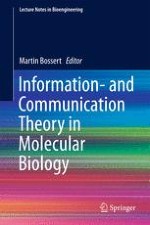2018 | OriginalPaper | Buchkapitel
7. Improving the Reliability of RNA-seq: Approaching Single-Cell Transcriptomics To Explore Individuality in Bacteria
verfasst von : Martin Bossert, David Kracht, Siegfried Scherer, Richard Landstorfer, Klaus Neuhaus
Erschienen in: Information- and Communication Theory in Molecular Biology
Aktivieren Sie unsere intelligente Suche, um passende Fachinhalte oder Patente zu finden.
Wählen Sie Textabschnitte aus um mit Künstlicher Intelligenz passenden Patente zu finden. powered by
Markieren Sie Textabschnitte, um KI-gestützt weitere passende Inhalte zu finden. powered by
